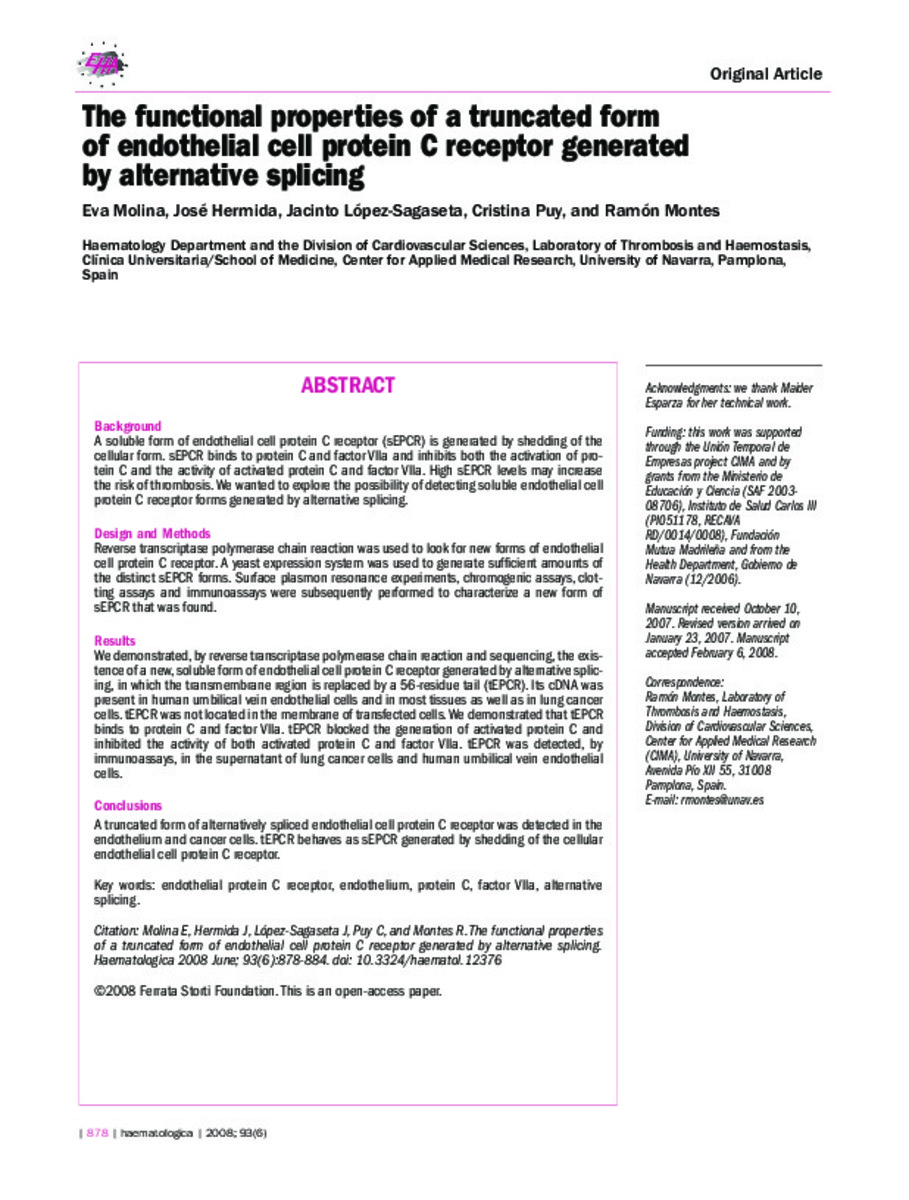The functional properties of a truncated form of endothelial cell protein C receptor generated by alternative splicing
Keywords:
Endothelial protein C receptor
Endothelium
Protein C
Factor Vlla
Alternative splicing
Publisher:
Ferrata Storti Foundation
Citation:
Molina E, Hermida J, Lopez-Sagaseta J, Puy C, Montes R. The functional properties of a truncated form of endothelial cell protein C receptor generated by alternative splicing. Haematologica 2008 Jun;93(6):878-884.
Statistics and impact
0 citas en

0 citas en

Items in Dadun are protected by copyright, with all rights reserved, unless otherwise indicated.







